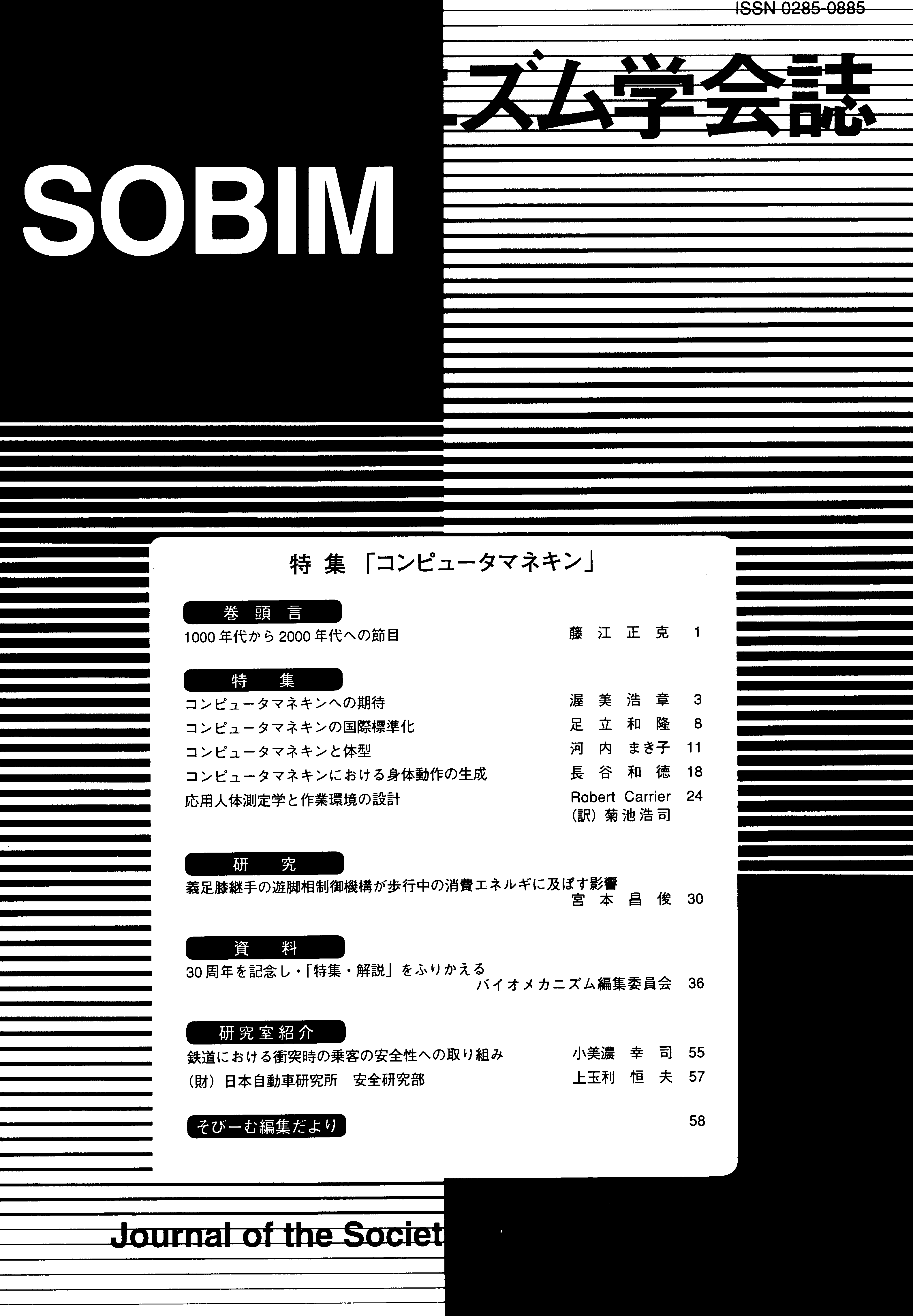All issues

Volume 23, Issue 4
Displaying 1-8 of 8 articles from this issue
- |<
- <
- 1
- >
- >|
Reviews
-
[in Japanese]Article type: Article
1999 Volume 23 Issue 4 Pages 186-191
Published: November 01, 1999
Released on J-STAGE: November 01, 2016
JOURNAL FREE ACCESS -
[in Japanese], [in Japanese], [in Japanese]Article type: Article
1999 Volume 23 Issue 4 Pages 192-198
Published: November 01, 1999
Released on J-STAGE: November 01, 2016
JOURNAL FREE ACCESS -
[in Japanese]Article type: Article
1999 Volume 23 Issue 4 Pages 199-202
Published: November 01, 1999
Released on J-STAGE: November 01, 2016
JOURNAL FREE ACCESS -
[in Japanese]Article type: Article
1999 Volume 23 Issue 4 Pages 203-209
Published: November 01, 1999
Released on J-STAGE: November 01, 2016
JOURNAL FREE ACCESS -
[in Japanese]Article type: Article
1999 Volume 23 Issue 4 Pages 210-214
Published: November 01, 1999
Released on J-STAGE: November 01, 2016
JOURNAL FREE ACCESS -
[in Japanese]Article type: Article
1999 Volume 23 Issue 4 Pages 215-220
Published: November 01, 1999
Released on J-STAGE: November 01, 2016
JOURNAL FREE ACCESS -
[in Japanese]Article type: Article
1999 Volume 23 Issue 4 Pages 221-225
Published: November 01, 1999
Released on J-STAGE: November 01, 2016
JOURNAL FREE ACCESS
Papers
-
Hirohumi Hirayama, Yoshimitsu Okita, Teruhisa KazuiArticle type: Article
1999 Volume 23 Issue 4 Pages 226-236
Published: November 01, 1999
Released on J-STAGE: November 01, 2016
JOURNAL FREE ACCESSWe propose an equivalent electrical circuit model of systolic coronary circulation under the optimal control principle. The electrical circuit consisted of epicardial and endocardial regions both having arterial and venous systems. We set aortic pressure and active pressure produced by the active elastance of cardiac muscle as control inputs that have to be optimized. The performance function for criterion the optimality of the system consisted of squares of coronary flow rates, rates of temporal change in pressures and control inputs. We defined that the systolic coronary circulation achieves the optimal state when the performance function has been minimized during the systolic period. The resistance and capacitance of the intra myocardial vessel were set to exponential functions of the systolic period. The optimizing modeling was then reduced to solve six simultaneous differential equations with three sets of boundary conditions. The present optimized modeling could reconstruct the physiological temporal changes in passive intra myocardial pressures with the physiological peak values. The temporal changes and the peak values of the optimized active pressures by the active elastance of cardiac muscle were comparable to the physiological patterns. The responses of the active and passive pressures to the changes in vessel resistances and compliance were compensatory actions to prevent disturbances in coronary circulation and to achieve effective and economical perfusion for the cardiac tissue. The systolic coronary circulation must operate under the optimal principle that minimizes the perfusion disturbance and excessive ventricular work. An improved version of the present modeling will be available for simulating the biological observation.View full abstractDownload PDF (971K)
- |<
- <
- 1
- >
- >|